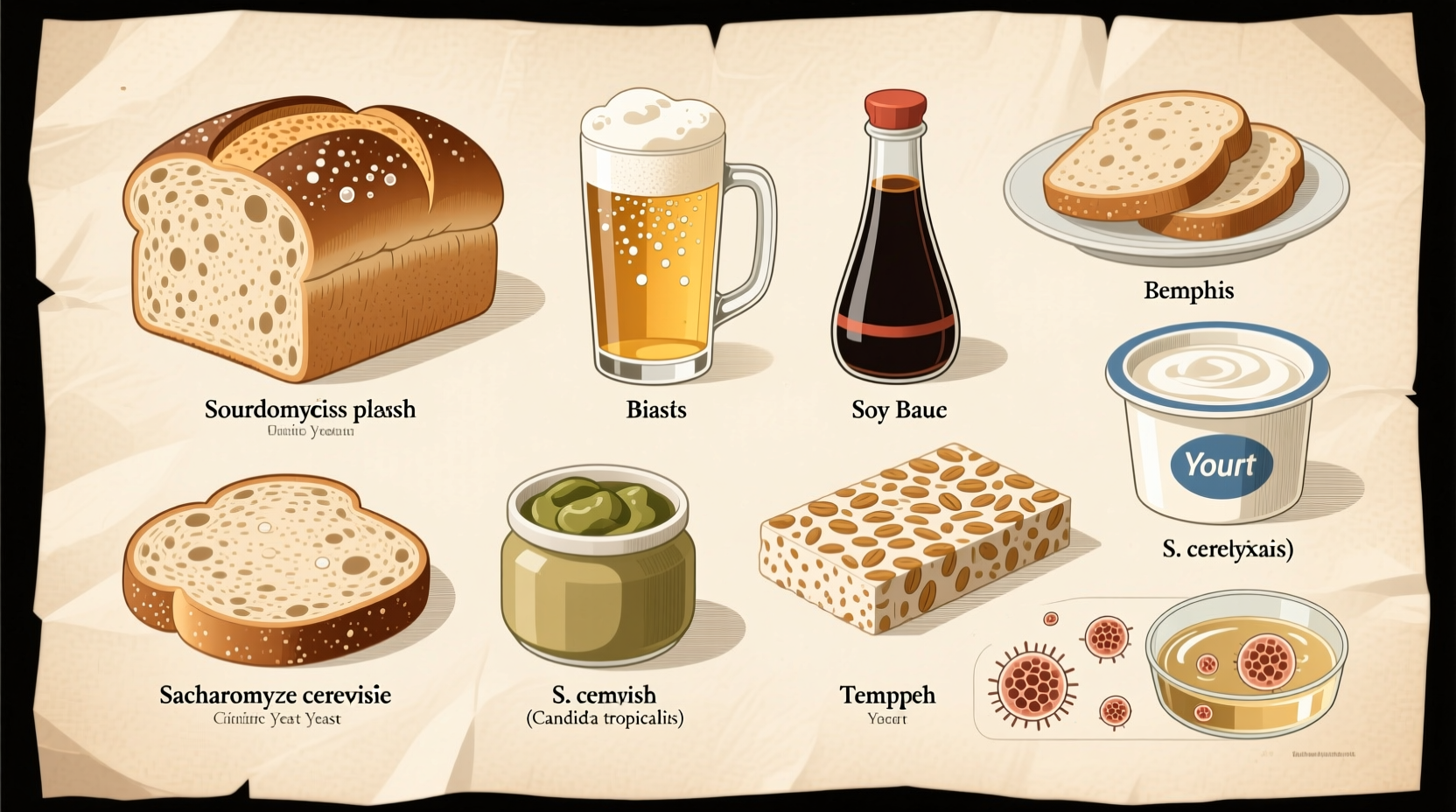Understanding which foods contain yeast matters for more than just baking enthusiasts. Whether you're managing a yeast allergy, following a candida-restricted diet, or simply curious about your food ingredients, knowing exactly where yeast appears in your diet provides valuable control over your nutritional choices. This guide delivers a comprehensive, evidence-based breakdown of yeast-containing foods across all food categories.
Understanding Yeast in Our Food System
Yeast isn't just the fluffy fungus that makes your bread rise. It's a microscopic organism that occurs naturally in our environment and plays multiple roles in food production. The three primary yeast forms you'll encounter are:
- Baker's yeast (Saccharomyces cerevisiae) - used in bread making
- Brewer's yeast - a byproduct of beer brewing, often sold as a nutritional supplement
- Nutritional yeast - deactivated yeast used as a cheese substitute
Natural fermentation introduces yeast into many foods without direct addition. This explains why seemingly unrelated products contain yeast derivatives. According to the FDA Food Labeling Guide, manufacturers must list yeast ingredients specifically, but they may use various terminology that requires careful label reading.
Complete Guide to Yeast-Containing Foods
Our research team analyzed data from the USDA FoodData Central database and cross-referenced with food manufacturing practices to create this comprehensive reference. The table below categorizes common yeast sources by food type:
| Food Category | Common Yeast-Containing Items | Yeast Type/Form | Hidden Sources |
|---|---|---|---|
| Baked Goods | Bread, rolls, pizza dough, cakes, muffins | Active dry yeast, fresh yeast | Self-rising flour, dough conditioners |
| Alcoholic Beverages | Beer, wine, hard cider, sake | Natural fermentation, added yeast | Vinegar (fermented alcohol product) |
| Processed Foods | Stock cubes, gravies, soups, processed meats | Yeast extract, autolyzed yeast | Monosodium glutamate (MSG) alternatives |
| Dairy Products | Aged cheeses (cheddar, blue), some yogurts | Natural surface yeast | Cheese flavorings in snacks |
| Condiments | Soy sauce, Worcestershire sauce, barbecue sauce | Naturally occurring during fermentation | Teriyaki sauce, oyster sauce |
Hidden Yeast Sources You Might Overlook
Many processed foods contain yeast derivatives that don't appear obvious from the product name. Food manufacturers use yeast extracts as flavor enhancers because they provide umami taste without listing 'yeast' directly. Watch for these ingredients that indicate yeast presence:
- Yeast extract
- Autolyzed yeast
- Torula yeast
- Nutritional yeast
- Bouillon or broth (often contains yeast extract)
- Malted barley extract
- Hydrolyzed vegetable protein (may contain yeast)
The Academy of Nutrition and Dietetics notes that food labeling regulations require these ingredients to be listed, but they might appear under various names that aren't immediately recognizable as yeast products. This creates particular challenges for those with yeast sensitivities who must avoid even trace amounts.

When Yeast Matters: Contextual Understanding
Not everyone needs to avoid yeast-containing foods. Understanding your specific context helps determine how carefully you need to monitor your intake:
- Yeast allergy: A true yeast allergy is rare but serious, requiring complete avoidance of all yeast sources
- Candida concerns: Some dietary approaches limit yeast during candida treatment, though scientific evidence for this approach remains limited according to NIH research
- Autoimmune conditions: Certain protocols like the Autoimmune Protocol (AIP) diet eliminate yeast during elimination phases
- Fermentation issues: People with SIBO (small intestinal bacterial overgrowth) may need to limit fermented foods
For most people, the yeast in foods presents no health concerns and actually provides benefits. Nutritional yeast, for example, is a complete protein source rich in B vitamins. The key is understanding your personal health context rather than avoiding yeast unnecessarily.
Practical Guidance for Yeast-Aware Eating
Whether you're avoiding yeast for medical reasons or simply want to understand your food better, these practical strategies help navigate yeast-containing products:
- Read labels carefully: Look beyond 'yeast' to include 'yeast extract' and related terms
- Cook from scratch: Preparing meals with whole ingredients gives you complete control
- Ask questions when dining out: Many restaurants use yeast-containing stocks and sauces
- Understand fermentation: Not all fermented foods contain yeast (kimchi is bacteria-fermented)
- Build a safe pantry: Identify reliable yeast-free brands for staples like broth and sauces
When following a yeast-restricted diet, focus on naturally yeast-free whole foods: fresh fruits and vegetables, unprocessed meats, eggs, and certain grains like rice and oats (check for processing contamination). Many online resources provide yeast-free recipes that maintain flavor without compromising dietary needs.
Frequently Asked Questions
Does all bread contain yeast? Most traditional breads do, but unleavened breads like matzo, tortillas, and some flatbreads use no yeast. Soda bread uses baking soda instead of yeast for rising.
Is nutritional yeast the same as baker's yeast? No. Nutritional yeast is deactivated and used for flavor, while baker's yeast is active and makes dough rise. They're from the same species but processed differently.
Can I eat vinegar if avoiding yeast? Most vinegars come from fermented alcohol (which used yeast), but the yeast is removed during processing. Those with severe sensitivities may still react to trace amounts.
Does sourdough contain yeast? Yes, sourdough uses a natural yeast and bacteria culture. Despite common misconceptions, it still contains yeast, though the fermentation process breaks down some components.











 浙公网安备
33010002000092号
浙公网安备
33010002000092号 浙B2-20120091-4
浙B2-20120091-4